Gloucester Tops - 26-28/11/2010
Friday
We set out from Hornsby on the Friday evening to Gloucester Tops NP to look for Rufous Scrub-birds, Olive Whistlers, Tiger Quoll and anything else that might turn up. It had been generally very quiet on the trip up until we got to Stroud and turned off onto quieter country roads. Soon after, we had our first frog - an Australian Green Tree Frog that was sitting on the road. This was the first of quite a number, which also included Green-thighed Frog and Wilcox's Frog. The Green-thighed Frog is not particularly common.
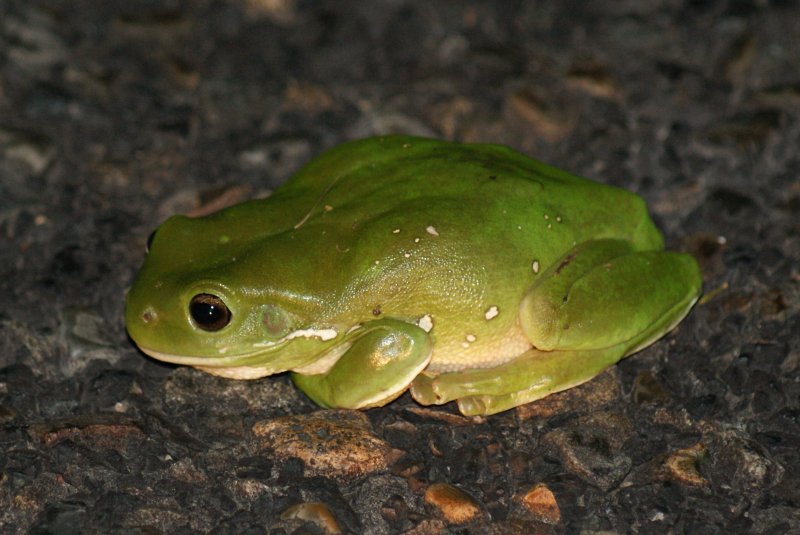
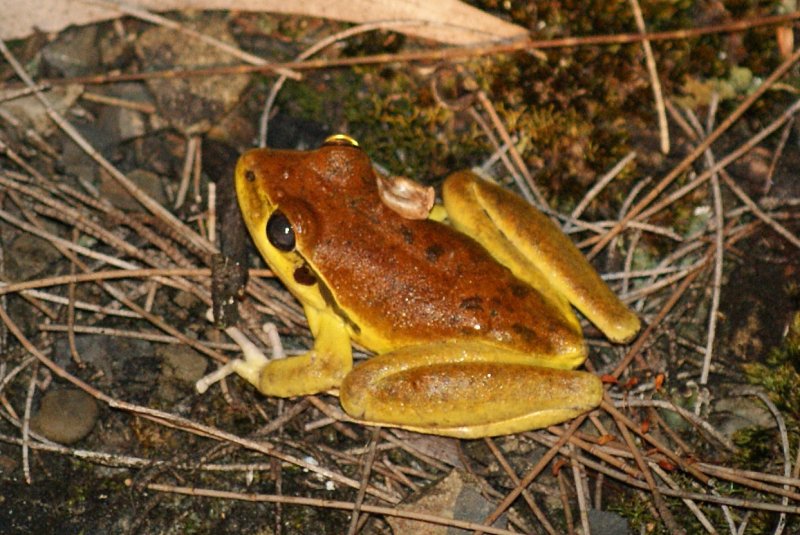
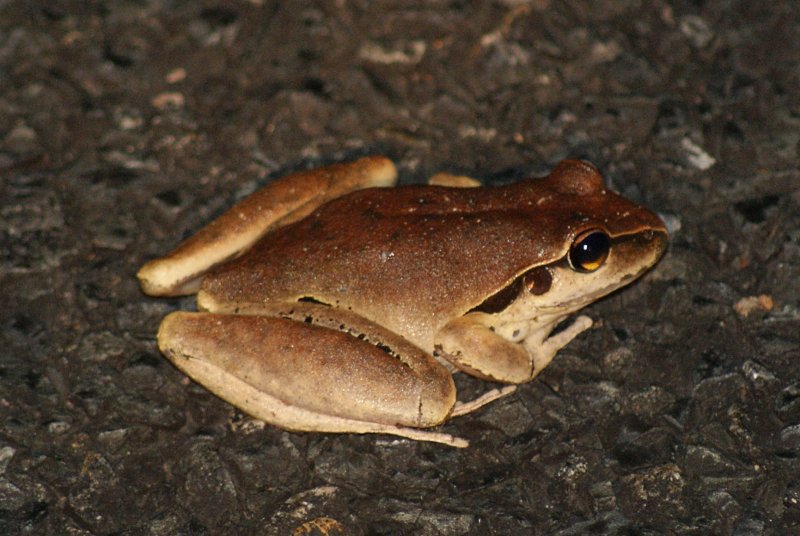
Top to bottom: Australian Green Tree Frog; male Wilcox's Frog in breeding colours and female Wilcox's Frog
Cheered by the finding and identification of the frogs, the next find was even better - a Short-beaked Echidna. It was shuffling across the road and we stopped to get a better look and take some bad photos. This was followed by a surprise sighting of a Common Dunnart scuttling on the road.
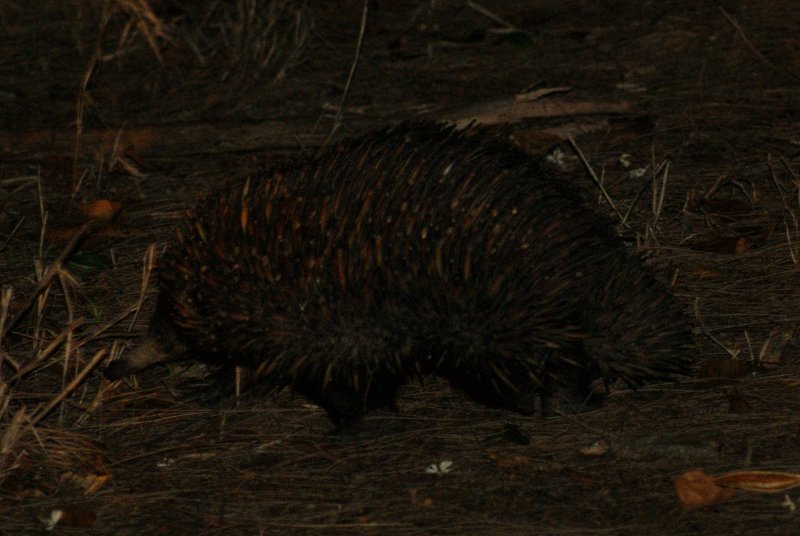
Short-beaked Echidna
After passing plenty more Wilcox''s Frogs on the way, we got to the NP and started the drive up the hill towards a spot where we had been told a Tiger Quoll lived. Something we soon noticed was the absence of any birds that night. On a previous trip, we had counted sixteen Tawny Frogmouths and a Southern Boobook along the road, but this time there was nothing. Only at the top did we hear a Boobook from some distance. No sign of the quoll at the top, so we drove on some more, but found little. A few bats were about and using a 'bat detector' and glimpsing what details we could as they passed through out light, we were able to find which species were there: a Large-eared Pied Bat and a Southern Forest Bat. On the drive back, we found ten Greater Gliders high up in the gums trees by picking out the reflection of their eyes in the torch beam. After this, we set up camp for the night and Ed spotted a Red-necked Pademelon, a small kangaroo which can be often found in the area.
Saturday
The next morning, we got going back up the hill to look for any birds that were about. Several Wonga Pigeons were on the road and were not particularly afraid of the car.
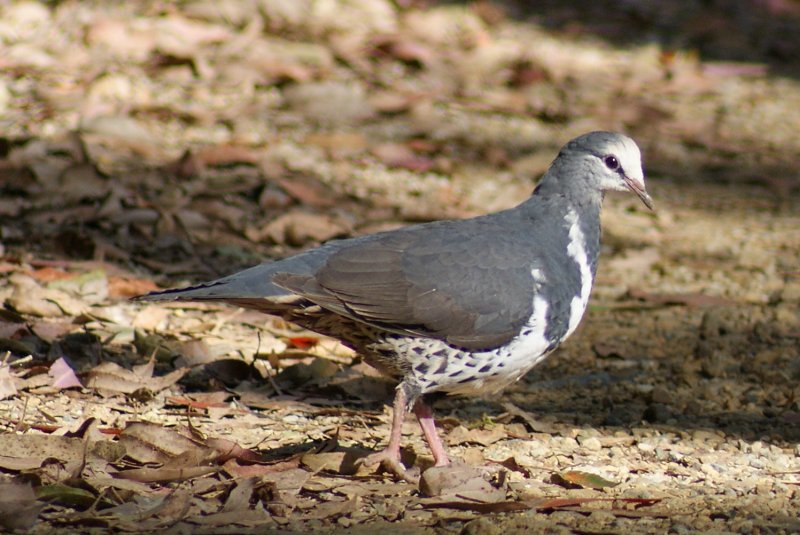
Wonga Pigeon
Along the way, we found a Black-faced Monarch, a few Crescent Honeyeaters, a Rufous Fantail, a few Fan-tailed Cuckoos. We also heard Paradise Riflebird, Shining Bronze-cuckoo and possibly a Green Catbird.
At the quoll spot, we left a few bits of salami out in case it was awake and hungry (we had been told that this particular one was not too shy and was also day-active at times) and went looking for Rufous Scrub-birds. On our last trip, we had heard several throughout the park, but after spending the morning and most of the afternoon looking, we had heard only the one. On the way back to the camp site, we found a male Flame Robin with its amazingly bright plumage.
Ed had a break from driving for a bit while we had lunch and then he had a rest so the leeches could have lunch on him. A pair of Superb Fairy-wrens were very inquisitive about me while I reading in the car, so I managed a couple of photos. We had seen a few Superb Lyrebirds at the campsite and one male managed to run in front of me. To top off the photo shoot, a female Satin Bowerbird came to have a look at us, showing the bright blue eyes nicely.
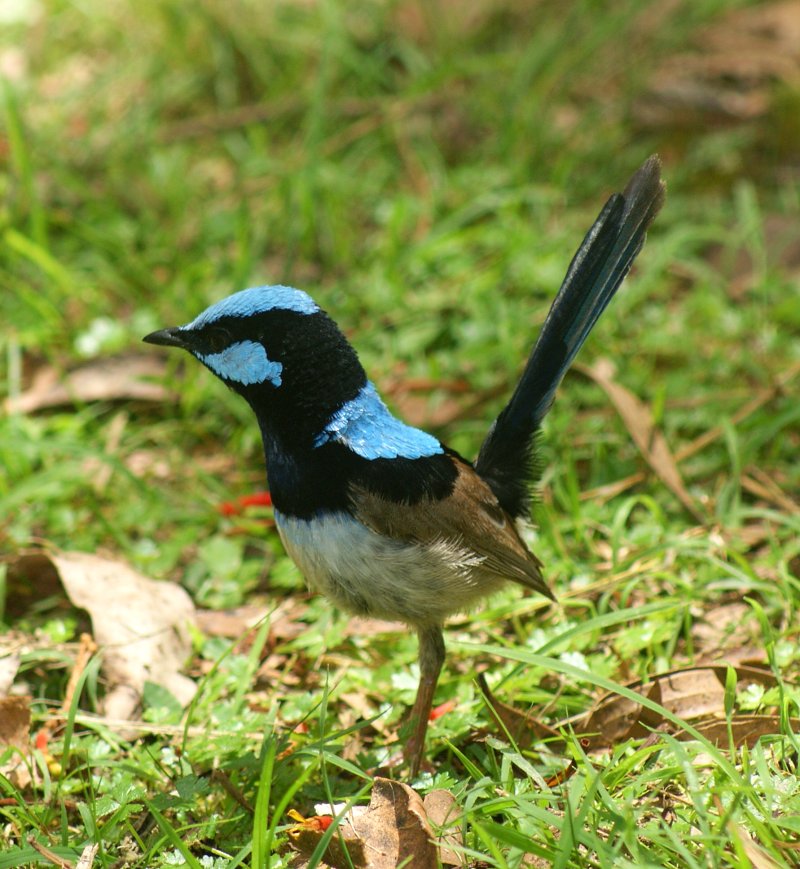
Male Superb Fairy-wren
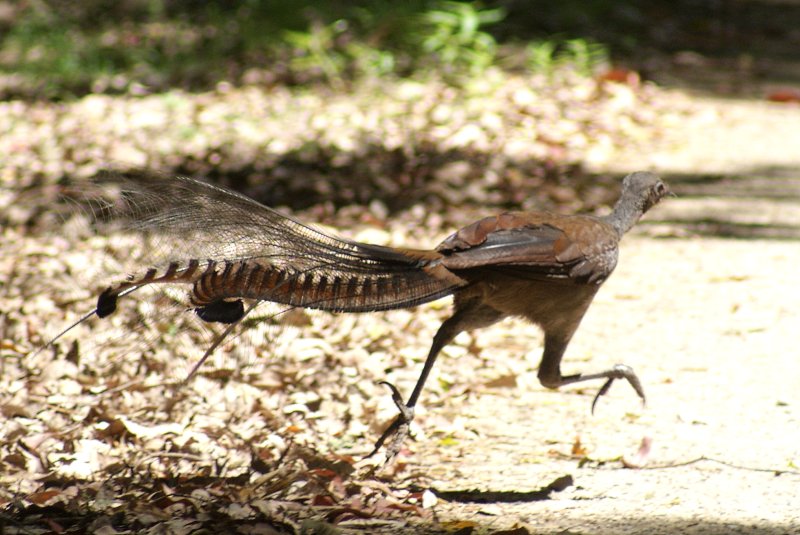
Male Superb Lyrebird, mid-hop
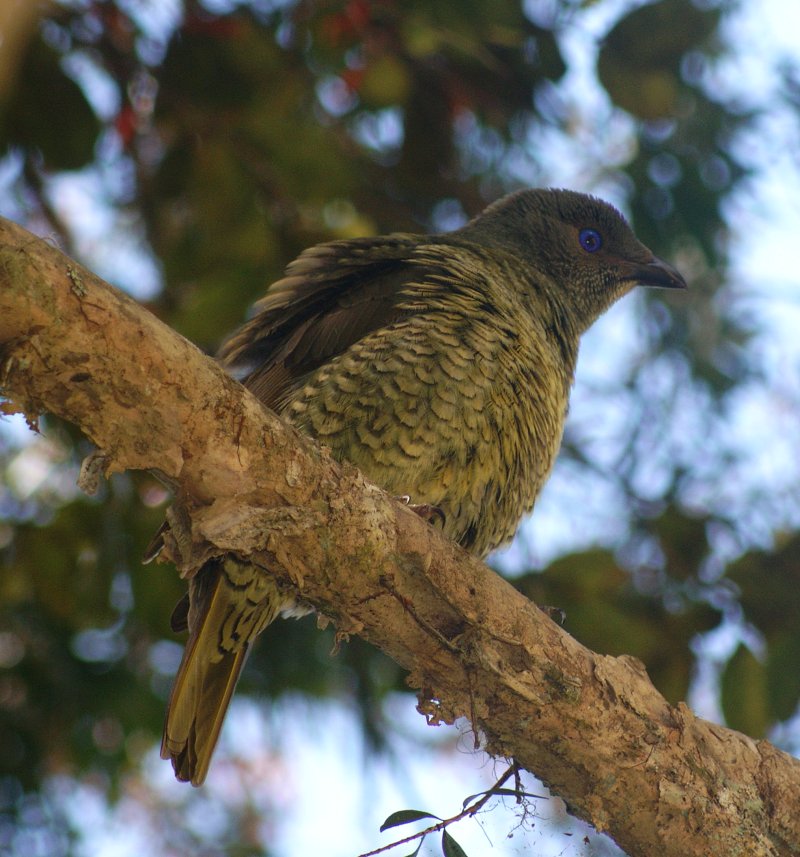
Female Satin Bowerbird
We went back to the spot where we heard the Rufous Scrub-bird. After trying to pinpoint the call for some time, we finally got a glimpse of it. Rufous Scrub-birds were once highly threatened and even now only exist in small pockets in NSW above 600 metres altitude. They are often very difficult to find, despite their loud songs and rarely come out of the foliage for a view.
By this time, it was getting towards dusk and began to drive back down. We thought we had heard a Noisy Pitta, but no sign. While we looking, a pair of Topknot Pigeons flew past through the trees. Further down, I managed to get another lifer with a Russet-tailed Thrush and a few more were seen along the route.
After driving out to Gloucester for dinner (passing a Wallaroo - also known as a Euro - in a quarry), we came back after dark to look for the quoll again. Once again, no luck and no birds, either. On the way back down to the camp site, we found a small group of Red-necked Pademelons and got good views.
Sunday
After breakfast, we headed for a change of scenery and to have a look for the Beach Stone-curlew and other waders at Old Bar, near Taree, getting a good view of a few Pheasant Coucals, a Nankeen Kestrel and a Whistling Kite on the way. It was fairly busy at Old Bar with a lot of people kite surfing, which appeared to have scared off quite a few of the birds, including a mixed flock of Great and Pied Cormorants. Ed was almost sure he caught a glimpse of the Beach Stone-curlew flying off, but couldn't be sure. A few Pacific Golden Plovers and a Grey-tailed Tattler were on a sandbar, but otherwise it was quiet. We moved round to look at the beach where a colony of Little Terns breeds, passing some Yellow-tailed Black-cockatoos on the way. We found some more PGPs and a family of Red-capped Plovers with a tiny chick (the adults are small enough to start with). Some Little Terns settled into the dunes behind the beach in the roped-off area and on the beach, we could see Greater Crested and Common Terns, fishing with the Little Terns.
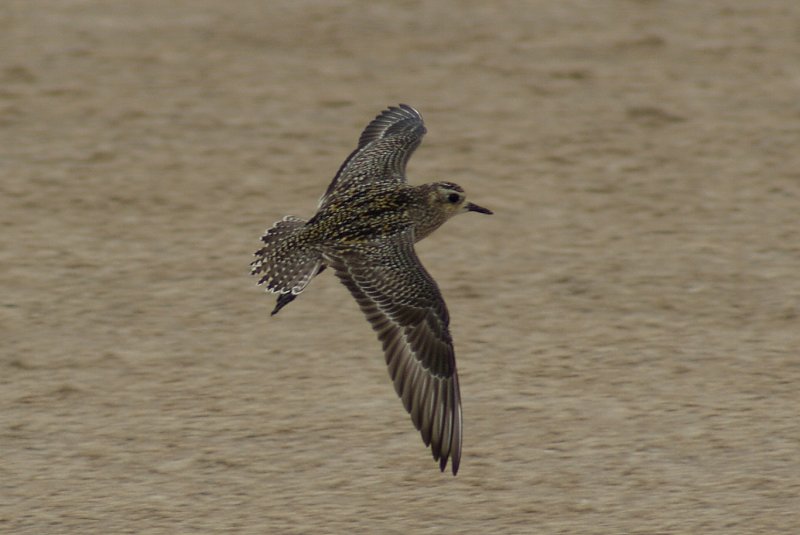
Pacific Golden Plover
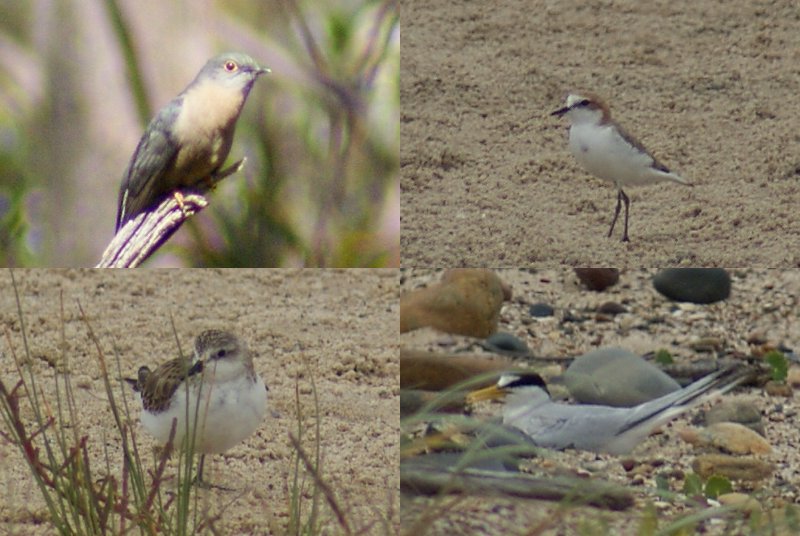
Fan-tailed Cuckoo, Red-capped Plover, Red-necked Stint and Little Tern.
Getting back to the car, Ed heard a Mangrove Gerygone which we both saw. In this part of NSW, Forest Ravens occur in small numbers and we could hear one calling - much shorter and deeper calls than the Australian Raven. We started back for Hornsby, planning to stop at either Myall Lakes for a Radjah Shelduck or Grahamstown Reservoir for a Musk Duck. We chose the latter and spotted a female with a duckling and a male, having passed a pair of Wedge-tailed Eagles on the motorway to get there.
A final stop was made at Ash Island, which was very quiet at first, but some of the ponds at the back turned up some good birds. Egrets were in abundance with Great, Intermediate and Little Egrets and White-faced Herons. A few Black-fronted Dotterels and Masked Lapwings made up the wader contingent. The fields around had decent numbers of Skylarks (a European introduction) and Australasian Pipits. A pair of White-breasted Woodswallows perched in a dead tree over one of the ponds.
Rain settled in on the way back at the end of an excellent trip. On the trip, I got five bird lifers, two frogs, one lizard (Alpine Water-skink) and six new mammals. In total, we saw 82 species of bird and heard another ten.










